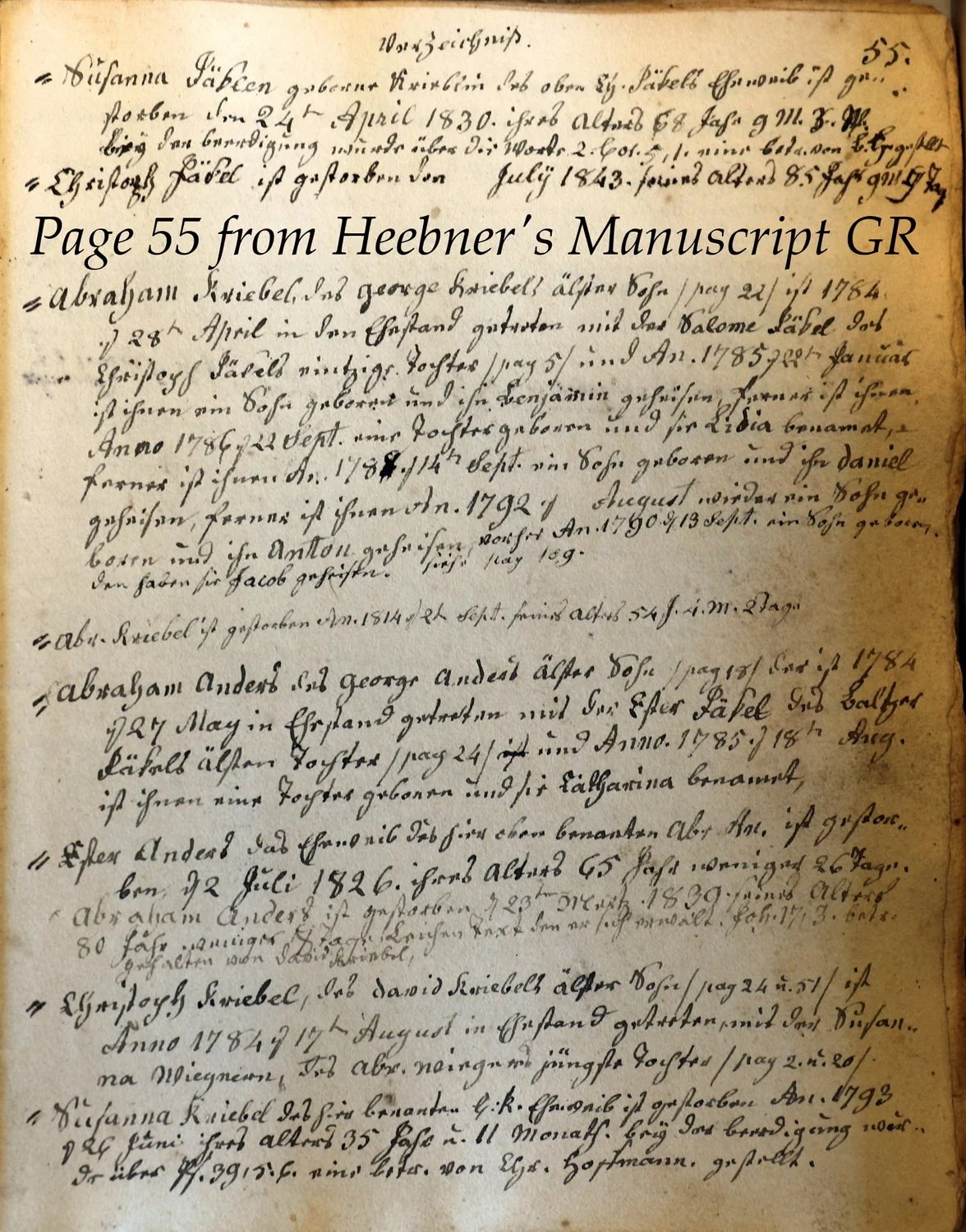How to Understand the Heebner G.R.
Written by Allen Viehmeyer, Associate Director of Research
Purpose and Organization of Rev Heebner’s 1848 Genealogical Manuscript
This installment on the history of the Genealogical Record of the Schwenkfelder families … focuses on the purpose and organization of Rev. Balthasar Heebner’s manuscript of families in his parish.
Genealogical Models: Individual vs. Family Centered Approaches
Typically, genealogists construct a family tree of a single, central person, showing, to the extent possible, all the bloodline ancestors and descendants. Many different charts (Ancestor, Descendant, Hourglass) can be drawn to show relationships to the central person. Schwenkfelder genealogies differ from this basic model.
Taken as a whole, Schwenkfelder genealogy is focused on families, not central individuals. This genealogy consists of multiple, unrelated family trees, i. e. the overarching relationship beyond the immediate family is not a bloodline, but a spiritual affiliation. Moreover, ancestors prior to the earliest Pennsylvania immigrant heads of household (1731–1737) are of little interest.
Rev. Heebner’s 1848 Manuscript Structure
Page 55 from Rev. Heebner’s Genealogical Record
Rev. Heebner’s forerunner to the 1879 GR is entitled (in English translation) A Listing of those people among us who are born, who die, and who get married. The title succinctly states the purpose of his endeavors. His work is more akin to a random list of the members of his church community and their immediate ancestors (parents) and descendants (children). There seems to be no organization to the list; it is not alphabetical or chronological. Related families are not usually together. In the back of the book is an index (ca. 496 heads of household) in alphabetical order by first name; the family name is present but disregarded during the alphabetizing process. Non-heads of household (primarily unmarried children) are not listed in the index.
Heebner’s basic organizational concept is the family, not the individual.
This posting is part of a series of postings about the GR and how to use it. For more background on the Schwenkfelders, see An Immigration Story.

